41 A Glimpse at the Reality Existing After Ours through Near-Death Experiences
Mackenzie Shelton
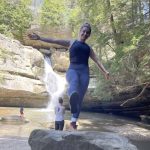
Hello! I’m Mackenzie Shelton. I found inspiration for this chapter, A Glimpse at the Reality Existing After Ours Through Near-Death Experiences, while walking my dog one day. I was nearing the third quarter of the semester and still searching for a topic that would strike my interest, and it came almost effortlessly in a podcast that covered supernatural phenomena on an episode of one woman’s near death experience. Death and the ultimate question of “where do we go once we die?” has always fascinated me, so I was intrigued to dive into an array of perspectives from around the world…read more.

Near-death experiences (NDEs) are gateways for the soul—a profound, transformative experience that has taken place for some who have kissed death and returned. It is estimated that NDEs affect 1 in 10 people (The European Academy of Neurology, 2019). At best, these experiences are dismissed as wild dreams or hallucinations, but we struggle to make sense of what they are. One way some scientists have been trying to explain the reality of near-death experiences is in the connection between psychedelics and psychology. Dr. Rick Strassman (2001), a psychologist who has done extensive research on the topic, is one among many hypothesizing that NDEs are a result of the hallucinogenic chemical dimethyltryptamine, or DMT for short. He suspects that DMT is produced in the pineal gland of the brain, which is an area of the brain we still know little about. Because of the pineal gland’s connection to light (what we do know is that it produces melatonin, a hormone that regulates both the reproductive system and the circadian rhythm), it has been spiritually associated with many ideas of a higher conscious and enlightenment such as the third-eye, crown chakra, and the seat of the soul. Strassman infers that DMT is produced in times of birth, near-death, death, and intense pain.
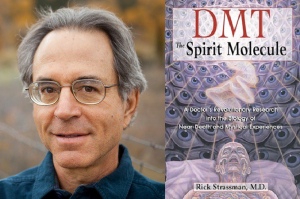
Psychology and science don’t always agree. The largest issue with near-death experiences in the scientific realm is that these experiences are not experiments that can be conducted, tested, or repeated. They are subjective, random, and unique to the individual. However, it would be presumptuous to expect science to have the answer to all things at one time: throughout history, science has evolved to answer and challenge preconceptions. We now have a scientific understanding of natural events like gravity, the orbit of the universe, the timeline of the earth, and the human impacts causing climate change at a scale beyond past expectations. But just because these concepts were not scientifically known at one point does not make them untrue. Thus, the case for the existence of near-death experiences is compelling.
As the interest in examining the phenomena of near-death experiences gains traction in the scientific community, scales to classify an NDE have developed. The Greyson NDE scale is the most validated and asks 16 questions such as, “Did you suddenly seem to understand everything?”, “Did you seem to enter some other, unearthly world?” and the final question, “Did you come to a border or point of no return?” (Greyson, 1983). The questions are graded with answers that can give up to two points each, totaling a maximum score of 32. Scientifically, for an experience to qualify as an NDE, it must score at a seven or higher. According to Dr. Jeffrey Long, a recognized world expert on NDEs, “An investigation of the NDEs shared with NDERF led to nine lines of evidence suggesting the reality of NDE” (Long, 2014). Long created the nonprofit Near Death Experience Research Foundation (NDERF) that I’ve pulled many accounts from (and, though it will not be the main focus of this chapter, the article by Long is a remarkable source for comparable, statistical data on NDEs).
Perhaps the most well-known and corroborated near-death experience is that of American singer-songwriter Pam Reynolds (Wehrstein, 2017). In 1991, Pam was 35 when she underwent a treacherous standstill procedure involving hypothermic cardiac arrest to operate on a massive aneurysm in her brain. For lack of better terms, with zero heart and brain activity, Pam was dead.
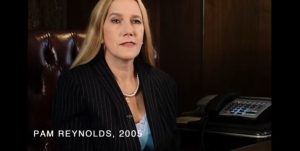
The first thing she heard was the buzzing of the saw being used to cut open her skull. She noticed that the buzzing rang at a perfect natural D pitch, and could feel it pulling her out of her body. As she looked down, Pam could see her own body on the operating table and all of the details of the room around her. She was able to describe the bone-saw the doctor used, and even knew what one of the female surgeons in the room had said about her arteries. Then, she felt herself being pulled and willingly going up what she describes as feeling like a tunnel, but more like a very fast elevator. It was pitch black, with a tiny pinprick of light. She heard her grandmother calling out to her, but the sound was clearer than normal.
The light progressively grew in size until, at the end of the tunnel, it consumed her in its brightness. Slowly, she was able to discern recognizable figures in the light. The figures were also made of and radiating light, but took the forms of her passed loved ones when they had been at their best. Her family prevented her from going further and this was communicated to her telepathically, because if she went further they wouldn’t be able to reconnect her to her physical body. Then, in a sense, they fed her. Not by mouth, but she could feel she was being nourished with something that made her feel fed and strong.
Ready to return, Pam’s uncle led her back through the tunnel, but she froze when she saw her body. She says,
“I didn’t want to get into it… It looked terrible, like a train wreck. It looked like what it was: dead. . . . It scared me and I didn’t want to look at it. It was communicated to me that it was like jumping into a swimming pool. . . . I didn’t want to, but I guess I was late or something because he [the uncle] pushed me. I felt a definite repelling and at the same time a pulling from the body. The body was pulling and the tunnel was pushing… It was like diving into a pool of ice water… It hurt!”
Almost humorously, Pam remembers the song that the medical team finished the operation to: Hotel California by The Eagles was playing and the song’s famous last line echoed on. “You can check out anytime you like/ but you can never leave” (Felder et al., 1976, 4:15). As a result of her experience, Pam had no fear of death, and said, “If death is the worst thing that happens to us, what an incredible thing!” (Reynolds during an MSNBC broadcast, as quoted in Wehrstein, 2017).
The details of Pam’s near-death experience have been widely corroborated, down to the description of the saw, the doctors in the room, and the comment about her arteries. Her story is far from the only experience out there, but arguably serves as the most compelling. With the first-hand accounts of doctors and nurses, Pam’s vivid recollection of the events that transpired were validated.
Near-death experiences have occurred in people of all ages, as well as outside of the medical room. Stephanie R (n.d.), for instance, was only 11 when she had hers in 1966. Stephanie was riding her bike home from school and suddenly found herself inches away from a car barreling towards her. Stephanie knew she was going to die and remarks that a reel of her brief lifetime flashed before her eyes within the seconds approaching the impact.
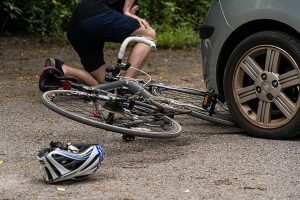
The car struck. Instantly, she was on the “other side,” in a reality that she describes was not physical or tangible, just soft and lovingly comfortable. Most interesting about Stephanie’s NDE, however, is that she remembers having counsel about whether or not she wanted to go back. She recalls,
“I would have injuries to deal with. And the dysfunctional life that I came from would still have to be lived. I also knew that I had plans for this life. I had curiosity and even enthusiasm for coming back. . . . I knew that I would be back someday, at the right time. I decided to complete my life plan. I realized it had been a plan from before this life began. I was given a choice. And I chose to come back.”
When she returned to her body, it was like she was in a transition state where the people were just objects of colorful, motion-filled light. She explains that she understood all people as beings of energy and, along with the strengthening of her Jewish faith, she felt she had the deep gift of seeing and healing others’ energies as a result of the experience. She has also never feared death. Stephanie states, “I learned that the bottom line in life is simply to love, because that is the entire reality of the other place. How lucky am I to know that I am here by choice.”

Choices play a key role in many NDEs. One woman, a Buddhist named Elle D (n.d.), saw all of her life choices down to the intimacy of selecting her parents. She was 19 at the time of her NDE in 1969, when she went into convulsions from accidentally swallowing strychnine, a strong poison that can be found mixed with stimulant drugs like LSD and cocaine (CDC Strychnine, 2018). Elle was with a Tibetan Buddhist who began the Tibetan Book of the Dead ritual with her. She writes that her field of vision turned yellow as she lost control of her body and then, all at once, she saw and experienced what seemed like everything that had ever happened and would ever happen in vivid, intimate awareness from within the minds, bodies, and emotions of all beings. Elle says,
“I had a philosophical concept of oneness but was not prepared for how literal it turned out to be, experiencing the entire lifetimes of a seeming infinity of beings simultaneously. . . . There was no single consciousness of ego, of ‘I’, though I seemed to want to create that because I was overwhelmed by the flood of being all things.”
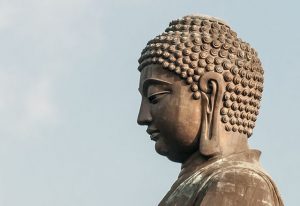
Elle also explains that she watched as her parents made love and saw how she originally chose them and entered her mother’s womb. She notes this experience was not observatory, but that “it was participatory…like repeating your part in a role again.” Then, she relived her life, saw herself at an old age, and died again. This cycle repeated until Elle learned to surrender at death. Finally, she found herself in utter bliss and what she refers to multiple times as the clear light—a term in Buddhism that refers to a clarity so pure and ultimate that it is beyond light. Elle says that she gained a complete understanding about the meaning of life and her purpose, but that she couldn’t bring that back as it “doesn’t seem to fit into the human brain.”
In learning to let go and surrender, Elle writes that, “There seemed to be an underlying lesson that our suffering arises from our resistance to what we actually are and our will to define ourselves . . . [the] inability to trust ‘the flow’ and surrender to something greater.” This lesson is consistent with the Buddhist teaching that David Loy discusses in “Healing Ecology” of learning how to end dukkha—which is broadly translated as suffering, restlessness, and anxiety—through spiritual awakening (Loy, 2010, p. 254). Sometimes people have to experience unfamiliar and vulnerable situations to gain a higher perspective.
In the case of Rachel F (n.d.), she had to experience a significant amount of blood loss to see the world through a new lens. Rachel had gone through birth complications with her daughter that resulted in her needing a blood transfusion. The event started with intense chills and tremors, accompanied by the inability to move her stiff jaw to speak. As she caught a glimpse of her fingernails going blue, she matter-of-factly realized she was dying. After fighting to stay calm and present, Rachel succumbed to the heaviness of her eyelids. Almost instantly, she hovered over her newborn and then felt like she was zipping through a tunnel with a presence beside her, though she couldn’t see the tunnel or the presence. Then, she met stillness and a “movie” of her life began. Rachel re-felt and witnessed every moment and event of her life from birth to death, including being bit by her guinea pig, and the sexual trauma she’d suppressed at a young age. Rather than be blamed for any of her own actions, she was asked what she had learnt. As the lessons and wisdom washed over her, the traveling began again. This time, there was a small light in the distance that she could feel herself desperately aching to get to. Rachel says,
“We moved faster and faster toward this beam of light. It grew in size in my vision, in intensity. I felt like I was flying. We burst into it. And it was indescribable. It was every incredible feeling that I will never be able to describe. It was immediate peace. Absolute, whole peace all throughout me. . . . I felt I was ‘home’.”
She recalls that she merged with the light and became One with everything, feeling completely loved in the purest form. She could communicate with the light, which she saw as ‘God’, and learned about everything, including the healing of our planet. Then, she was asked if she wanted to return to Earth and her body. Rachel says she felt repulsed by the suggestion and said no. After a pause,
“I was shown the baby I had just birthed, lying in the crib beside my body. I was shown much from time to come. Various outcomes that depended solely on whether or not I returned to my body. There would be countless lives that would be touched with this Love if I returned and many that would not know it if I did not. I remember taking what can only be described as a deep, soul sigh. A knowing sigh. An understanding.”
Her return was uneasy, as she mourned the loss of the light and love. For a long time after Rachel’s NDE, she battled suicidal thoughts and depression from aching to return ‘home’. Eventually, however, she healed and is now deeply in tune with the sensitivity and suffering of all beings. She was able to recover from the trauma of her sexual abuse and started an online support community for over 700,000 people that have also suffered abuse. Along with healing herself and others, she found a shift in her lens that took an environmental focus. Rachel notes that she is, “in no way an environmentalist,” but has felt a deep calling to support the entire planet in healing from the damage we’ve done. She can also procure out-of-body experiences during meditation, where she says she’s traveled to a different reality and communicated with other beings from the ‘light’. Her experience was transformative.

One man experienced a unique sort of traveling both in- and out-side of this reality during his NDE. Halil T (n.d.) is a Muslim man who is strong in faith. Like Pam, details about his experience that he could not possibly have otherwise known have been confirmed. While walking to pick his daughter up from school, Halil collapsed on the sidewalk of a heart attack. He noticed young people walking by, but he couldn’t speak. Then, everything went black.
Halil had an out-of-body experience next. He felt himself floating, and could hear sirens and see the ambulance that was rushing towards him. He watched as the medics placed him on a stretcher. He wasn’t too concerned about this, but did worry for how his wife and daughter would respond to the news of his death. He traveled to his wife’s workplace nearby, where he saw an Istanbul real estate page on her computer screen. Eventually, Halil’s curiosity took over. He decided to continue floating up, and saw a full view of everything. His city first, then the Black Sea, the entire country, the continent, and lastly, the world from space. After this, he experienced complete darkness once again, followed by a bright light which he later says he believes may have been Muhammad. As he floated towards the light, Halil felt like he was being sucked in and traveled through what he describes as either a cave or a tunnel. On the other end of the tunnel sat an open door, decorated with Islamic art. Halil then experienced a review of his life, including his own birth, and found himself in a lush meadow with colors so vibrant he was unable to describe them.
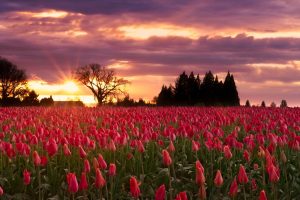
He remarks that his vision throughout the experience was much sharper and clearer than ever before. Halil tells the rest of his experience like this:
“I went inside a house and saw a young man who was sitting. As soon as he saw me, he stood up and ran to me. He looked similar to my father . . . I asked him who he was. He told me that he was my grandfather. Ever since I had known him, he was in a wheelchair. I was very surprised. . . . he asked me if I wanted to meet my deceased father. We walked for about 5 minutes. In the distance, I saw my father. When we got closer, he welcomed me with open arms. . . . [we] were walking along a field, and we saw a beautiful Mosque in the distance. As we got closer, I could feel my walking became more and more difficult. . . . They entered, but I could not.
I could feel myself being pulled back. I heard an authoritative voice say, ‘You shall not enter. You have not finished your life. When you have completed your life and continued to be a good person, you will earn your place here.’”
When Halil opened his eyes, he was in a hospital bed. He later shared his experience with many, including his nurses, friends, daughter, and wife. His wife was doubtful, but believed him as he was able to detail the website he saw open on her desktop. Her boss had offered her a position in Istanbul that day and, curiously, she decided to look at the area for housing. There was no other way Halil could have known or seen this. He says that his experience transformed him through feelings of peace, happiness, and no fear of death.
Some people receive their greatest happiness through nature, and this is reiterated in their experiences. Lonnie Thompson, Ohio State’s own, is a renowned paleoclimatologist, Distinguished University Professor, and Research Scientist at the Byrd Polar Research Center.
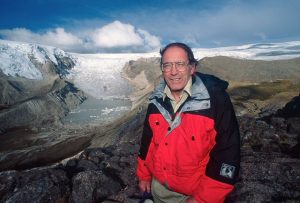
In November of 2011, Lonnie had a near-death experience of his own (2013). He was in the hospital with severe congestive heart failure where he wound up with an infection that left him gravely ill and unconscious for days. Among many weird, non-repeating visions that Lonnie saw during this time, one in particular stuck out to him. As he relays it,
“I jumped from my hospital bed and through space. I was in a spiral of bright lights coming from the Earth and I knew these were the life forces which are in all things and that connect us to each other. It was very much like looking at the Milky Way on some remote mountain top on a clear night. I assumed I was one of those bright lights moving to another place. The feeling was exhilarating. When I came down, I was in a place of rolling hills covered with brightly colored and varied types of grasses. There were bright purple flowers at my feet, like violets. It was a beautiful place and I felt at peace. A short time later I jumped back to my bed in the Ross Heart Hospital. It was some time later that I jumped again to the same place. This time there was a figure standing there in a white robe who said to me ‘Lonnie it is not your time! You have another purpose.’ I immediately jumped back to the hospital bed. The next day I started to improve.”
Even in his description, Lonnie’s love for the serenity that nature grants is evident. Just over a year after Lonnie was finally able to get a heart transplant, he led an expedition up the Zangser Glacier in Tibet. As he wrote in June of 2013, “Two days ago my new heart and I walked up over 20,000 ft. Since this experience I have pondered what my purpose might be. I expect I will know it when it appears.” One of Lonnie’s conclusions from his NDE was that Earth and heaven are interconnected and to destroy one would ultimately destroy the other.
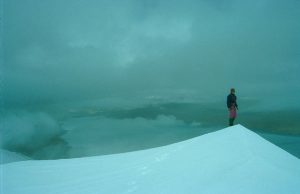
Though the accounts above share many similarities, there are also distinct, personal differences that make the occurrence of this phenomena believable. When we think of religious near-death experiences where people talk about “going to the other side,” we often expect to hear of them meeting God, Jesus, or another religious figure. However, this physical encounter is less common than an encounter with a formless, blinding light that emanates pure love and takes on an authoritative or counseling role as in the cases of Stephanie, Rachel, and Halil. For Elle, she saw herself in the clear light, which is the Buddhist enlightenment and clarity. Both Lonnie’s and Pam’s experiences contrast this, though. In Lonnie’s experience, he encountered a white-robed figure who told him it was not yet his time; for Pam, she saw her deceased relatives as figures of light that counseled, communicated with, and nourished her. Another stereotype surrounding death is the common phrase of having your “life flash before your eyes.” For four out of the six accounts detailed here, they witnessed a replay of their lives in varying ways. Stephanie saw it just as we’d expect, like a film on a reel. Rachel and Halil also had entire life reviews shown to them, but also saw their lives into the future. Additionally, Elle experienced the lives of all things, and saw her own until her death at an old age.
One of the largest similarities in themes between these experiences is that of birth and creation, but even this is experienced differently. Rachel and Stephanie understood creation, and Stephanie notes that she realized she had a life plan before her life had even begun. Halil witnessed his own birth, while Elle literally saw as her parents made her and participated in choosing them and being born. The centrality of creation in NDEs makes sense, as two of life’s greatest questions are: how are we truly created and what happens when we die? Perhaps near-death experiences serve to answer the unanswerable.
Death is one of the greatest unknowns to humankind. Depending on your stance, you may see death as the final fight or, perhaps, a surrender. It would not be far-fetched to say that for many in Western societies, death is a fight; in fact, both Elle and Rachel had to fight and ultimately surrender in their NDEs. Whether it is a true fear or our capitalist ways that prevent us from taking the proper time to mourn a loss in the community before returning to our everyday responsibilities, Westerners do not deal with death and spirituality in the way that many other cultures do. Interestingly enough, this seems to shine through in the prevalence of NDEs that have been shared in Western societies and those without religion. Atif Khalil, a faculty member in Religious Studies at the University of Lethbridge, suggests that, “the high percentage of NDEs in the West may be seen as a providential gift for a society struggling with existential questions of meaning and purpose. . . . This argument may explain why in a comparative study of the survivors of two earthquakes—one in China (officially atheist) and the other in Pakistan—forty percent of the Chinese reported NDEs, while only a negligible number did so in Pakistan” (Khalil, 2020). There have also been slight differences between the descriptions of NDEs in industrialized societies versus those in more tribal or developing communities. People in the United States, like Pam, often depict going through a tunnel or riding an elevator, while Halil, who is from Turkey, described it as a cave. All of these discrepancies are minor since they follow similar themes, though they do suggest that one’s surroundings have some effect on the content of their near-death experience.
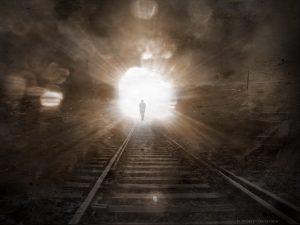
Across the board, these experiences were largely positive. Each individual described intense, indescribable feelings of peace, happiness, and love. For some, like Pam and Rachel, the event was so remarkable it made returning to their bodies painful. The six near-death experiences transformed the lives of their experiencers in very similar ways. Each person felt a greater sense of purpose in their own lives, compassion towards other beings (for some, this carried a sense of environmental stewardship), the centrality of love, and less, if any, fear towards death.
The question then remains: what can we, the non-experiencers, learn from NDEs? For starters, oneness, or the interconnectedness of all things, may be more universal than we think. The large amount of commonalities between NDEs and this feeling of oneness is frequently experienced. As a species, we are bound together and to other life forms. It seems that we can carry nothing with us past this realm aside from peace, compassion, and love; it would serve us well to incorporate these values even deeper in our lives.
There is a familiar anecdote in which a man asks an angel which religion is the best, to which the angel replies, “the one that brings you closest to God.” Near-death experiences are not confined to experiencers of a single faith, but appear across the multitudes. With such a beautiful array of human variety, religion is not a one-size-fits-all; so too, it seems, is the case for life after death. Perhaps it is plausible that the life we are received into after this one is what will fit us. The accounts shared in this paper reiterate that to me.
References
CDC Strychnine. (2018, April 04). Retrieved December 06, 2020, from
https://emergency.cdc.gov/agent/strychnine/basics/facts.asp
D, E. (n.d.). Elle D NDE. Retrieved November 9, 2020, from https://www.nderf.org/Experiences/1elle_d_nde.html
F, R. (n.d.). Rachel F NDE. Retrieved November 9, 2020, from https://www.nderf.org/Experiences/1rachel_f_nde.html
Felder, D., Frey, G., & Henley, D. (1976). Hotel California. [Song recorded by The Eagles]. On Hotel California. Universal Music Publishing Group.
Greyson, B. (1983). The Near-Death Experience Scale. The Journal of Nervous and Mental Disease, 171(6), 369-375. doi:10.1097/00005053-198306000-00007
Khalil, A. (2020, June 19). Science, Religion, and the Challenge of Near-Death Experiences. Retrieved from https://renovatio.zaytuna.edu/article/science-religion-and-the-challenge-of-near-death-experiences
Long, J. (2014). Near-Death Experiences Evidence For Their Reality. Missouri medicine, 111(5), 372–380. Retrieved from https://www.ncbi.nlm.nih.gov/pmc/articles/PMC6172100/
Loy, David. (2010). Healing Ecology. Journal of Buddhist Ethics, 17, 254-267.
R, S. (n.d.). Stephanie R NDE. Retrieved November 9, 2020, from https://www.nderf.org/Experiences/1stephanie_r_nde_7724.html
Strassman, R. (2001). DMT: The spirit molecule. [PDF file]. Rochester, VT: Park Street Press. Retrieved November 10, 2020, from https://files.meetup.com/17628282/DMT-The-spirit-molecule.pdf
T, H. (n.d.). Halil T NDE. Retrieved 6 December, 2020, from https://www.nderf.org/Experiences/1halil_t_nde.html
The European Academy of Neurology. (2019, June 29). One in 10 people have ‘near-death’ experiences, according to new study. Retrieved December 06, 2020, from https://medicalxpress.com/news/2019-06-people-near-death.html
Thompson, L. (2013, June 8). Zangser Glacier West Central Tibet. [PDF file].
Wehrstein, K. (2017, October 20). Pam Reynolds (Near-Death Experience). Retrieved November 9, 2020, from https://psi-encyclopedia.spr.ac.uk/articles/pam-reynolds-near-death-experience
